On 24 June we celebrate the birth of Saint John the Baptist, one of the most venerated Saints in the world, the last prophet of the Old Testament and the first Apostle of Jesus. This is what makes it so important and makes it an object of great devotion even today.
Contents [hide]
No person of the Sacred Scriptures can boast the primacy of Saint John the Baptist: that of having exulted at the news of the coming birth of Jesus even before being born in turn. Yet that is exactly what happened! Her mother Elizabeth, always considered barren and now elderly, became miraculously pregnant and received the visit of her cousin Mary of Nazareth, who carried the Savior in her womb. On that occasion, Mary sang the Magnificat, a song of thanksgiving and joy addressed to God, and Elizabeth blessed her. At that moment the son that she was carrying jumped with joy. We can therefore say that the closeness of Mary and Jesus has made the little John a priest even before he came into the world.
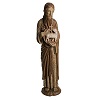
But this was certainly not the only miraculous event linked to the conception and birth of John the Baptist. It is no coincidence that the Church commemorates him not only on the day of his death (29 August) but also on the day of his birth (24 June), as is the case only for the Virgin Mary with him.
In addition to being a prophet of Christ even before he was born, his conception took place in extraordinary circumstances. Both his parents, Zechariah and Elizabeth, belonging to the priestly caste, were elderly and had no children. A descendant of Aaron, Elizabeth was as we have already said a relative of Mary, probably a cousin. They presumably lived in Ain Karem, not far from Jerusalem. One day the Archangel Gabriel appeared before Zechariah, who offered incense to the temple, and told him that his wife Elizabeth would give birth to a son whom he should call John. He also told him that he would be “filled with the Holy Spirit,” that he would be “great before the Lord,” and his forerunner.
And so it happened. Elizabeth became pregnant, and when six months later the Archangel Gabriel also presented himself to Mary to announce the birth of Jesus, he said to her, among other things: “See also Elizabeth, your relative, in old age has conceived a son, and this is the sixth month for her, whom everyone said was barren; nothing is impossible with God” (Luke 1:36-37).
Moreover, at his birth, his father Zechariah regained his voice, after he had become mute at Gabriel’s announcement. Jesus himself will say of Saint John: “I tell you, among those born of women there is none greater than John, and the least in the kingdom of God is greater than he.” (Luke 7:28)
The canonical Gospels contain all the information that has come down to us about Saint John the Baptist. The Gospel of Luke in particular. Thanks to him we know that John baptized Jesus in the waters of the Jordan (Luke 3:21-22) and that he died at the behest of King Herod Antipas (Luke 3:19-20; 9:7-9), who had him beheaded to give his severed head to his stepdaughter Solomon, as a reward for having danced for him at a banquet. Hence also the nickname “San Giovanni Decollato”.
As with Saint Joseph, tradition has it that John the Baptist was raised in body and soul and ascended with Jesus into Heaven at the time of the Ascension.
Tito Flavio Giuseppe, a Roman writer and historian of Jewish origin, also wrote about him. In the Gospel according to John, however, it is denied that John the Baptist and Jesus knew each other, while in the Gospel of Luke they are relatives.
We said at the beginning that John the Baptist was the last prophet of the Old Testament and the first Apostle of Jesus.
When John the Baptist had grown up, John went to live in the desert, where he led a life of penance and prayer, dressed in camel hair and wearing a leather belt around his hips. His food was locusts and wild honey (Mark 1:6).
Then he began his mission, preaching the coming of the Messiah. He was related by the evangelists to the ancient prophecies, which promised the advent of a messenger who would prepare the way for the Messiah. Let us think of Isaiah 40:3-4 (“A voice cries out, ‘In the wilderness prepare the way for the Lord, make straight in the wilderness the way for our God. Let every valley be filled, and every mountain and hill be brought low; let the rough ground be turned into a plain, and the steep ground into a plain”) and Malachi 3:1 (“Behold, I send unto you my messenger, who shall prepare the way before me, and immediately the Lord, whom ye seek, even the angel of the covenant, whom ye desire, shall enter into his temple. Behold, he cometh, saith the LORD of hosts.)
For the evangelists, John thus became “the voice of one crying in the wilderness”: “As it is written in the book of the oracles of the prophet Isaiah: The voice of one crying in the wilderness, Prepare the way of the Lord, make his paths straight.” (Luke 3:4)
John, therefore, preached to the Hebrews about the coming of the Messiah-Christ. He was an eschatological prophet, sent to prepare the people for that imminent change. Because of that coming, he spoke of the profound social and historical changes that would follow. John the Baptist burns with expectation, which for him becomes an opportunity to prepare the world for the action of God.
Waiting and preparation, but also an invitation to conversion given the coming of Jesus. To those who asked him if he was the Messiah, John offered forgiveness of all sins through Baptism and said: “I baptise you with water; but he comes who is stronger than I, to whom I am not worthy to untie the ties of my sandals. He will baptise you with the Holy Spirit and fire.” (Luke 3:16).
The Precursor: Why John the Baptist Is Called That
We have already told how Saint John the Baptist was still sanctified in his mother’s womb thanks to the visit of Mary pregnant with the little Jesus.
Moreover, his birth announced by the Archangel Gabriel makes him even closer to Jesus himself, of whom he has always been considered the Precursor.

The story of St. John the Baptist
St. John the Baptist is one of the most important figures, not only for the Catholic Christian religion, but in general, for all Christian Churches…
Precursor therefore for having known Jesus even before he was born, but also for having announced His coming and his mission of life.
After living for years in the desert, Saint John began his preaching alongside the Jordan, exhorting everyone to conversion, because of the imminent arrival of the Messiah. To those who came to hear him as a prophet, John offered the possibility of cleansing themselves from all sins through Baptism. For this reason too, many exchanged him for the Messiah himself.
To the great Priests, who sent an official delegation to him to understand what he was talking about, John replied that he was not the Messiah, as many believed, but only one who cried out in the desert, the bearer of the fulfilment of Isaiah’s prophecy.
The baptism of Jesus
After all the people had been baptized and Jesus also had been baptized and was praying, heaven was opened and the Holy Spirit descended upon him in bodily form like a dove. And a voice came from heaven, “You are my beloved Son; with you, I am well pleased.” (Luke 3:21-22)
We can consider the time of Jesus’ Baptism as the beginning of His preaching and mission on earth. And it was John the Baptist who baptised him when Jesus appeared to him at the Jordan River. When John saw him, he exclaimed, “Behold the Lamb of God! Behold he who takes away sin from the world!” (John 1:29). In practice, Jesus’ mission begins at the moment when Saint John concludes his mission. Shortly thereafter he will be arrested by order of King Herod and will die.
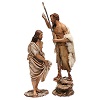
It is interesting to note that in the synoptic Gospels (Matthew, Mark and Luke) the Baptism of Jesus is told, while in the Gospel of John the episode of the descent of the Holy Spirit on Jesus is told from the point of view of John the Baptist, but it is not spoken of Baptism.
We must interpret the Baptism of Jesus in its deepest meaning. Jesus, by his nature, was sinless, he would not have any need to be baptised, since the Baptism offered by John the Baptist was aimed at the remission of sins. But it was Jesus himself who urged the Baptist to proceed to baptize him, citing as his motivation: “Let us do it this time, for it is fitting that in this way we fulfil all that is right” (Matthew 3:15).
The Catholic Church celebrates the Baptism of the Lord on the Sunday after the Epiphany, therefore on the Sunday between 7 January and 13 January.
The Madonna del Cardellino: explanation of the work
The iconography of Saint John the Baptist is essential, as he is the most depicted saint in the art of all time. He was usually depicted wearing animal skin and holding a stick with a cross on the top. Alternatively, we see him in the works of Raphael or Leonardo, as a child, while playing with Jesus, who is also small. In this version, it is called San Giovannino. The depiction of the Baptism of Jesus is also recurrent, as is his martyrdom, or his head placed on the tray with which Herod gave it to Solomon.
The Madonna del Cardellino is a painting by Raffaello Sanzio from 1506, kept in the Uffizi Gallery in Florence. It represents the Madonna, Jesus as a child seated on her legs and St John the Baptist embracing her. The two children are busy playing with a small bird, a goldfinch. This element, apparently insignificant, is the very heart of the work, as this cardinal would represent in the artist’s intention the Passion of Christ.
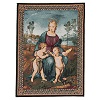
In Christian iconography, three types of birds are associated with the Passion and death of Jesus: the goldfinch, robin, and finch. This is because it is said that during the Crucifixion they tried to give help to Christ, detaching the thorns from the crown with their beaks. In doing so, however, they were wounded, and for this reason, on the chest of the cardinal, there are blood-red spots, a legacy of that gesture of mercy on the part of the little creature.
Our Lady, Jesus and John the Baptist
We have seen how in the history of art recurs the fact of depicting together the Madonna, Child Jesus and Saint John, or Saint Giovannino. The importance of this figure is such as to make it closer to Jesus and Mary than any other Saint or saint.
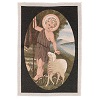
Only for him and for the Virgin Mary are celebrated both the day of death and that of the earthly birth, while the other saints are remembered only for the day of their death, called ‘dies natalis’ or day of rebirth to new heavenly life.
The feast of Saint John on 24 June has always had great popular importance. In addition to devotion to the saint, it is linked to traditions that refer to ancient pagan cults, linked to agriculture and the solar cycle. In ancient Rome on June 24, the summer solstice was celebrated, when the sun is at its peak in the heyday, and with it the beginning of the harvest. Thus, gradually passing from pagan customs to popular worship of the saint, on Saint John’s night the country people danced around the fires lit in the fields, bathed in the blessed dew and collected herbs considered magical before dawn. Even today these traditions remain in every culture, like echoes of a past with undeniable charm, where sacred and profane tended to mix often.
What the name John means
John is one of the most popular names in the world, in its infinite variations and also in the female versions. More than five hundred saints brought him, starting with Saint John the Evangelist, who was the beloved of Jesus and practically contemporary of the Baptist. The name John comes from the HebrewIehóhanan, which meant: “God is propitious”, or even “gift or grace of God”.
There are also many countries named after Saint John, one hundred in Italy alone.
Saint John is also considered the patron saint of: Baptistries, Singers, Prisoners, Wool Carders, Cutlers, Leather Tanners, Condemned to Death Sentences, Scissors Makers, Sword Makers, Leather Workers, Monks, Musicians, Fur Sellers, Tailors, Water Sources, Orphans and Strays, Fowlers.

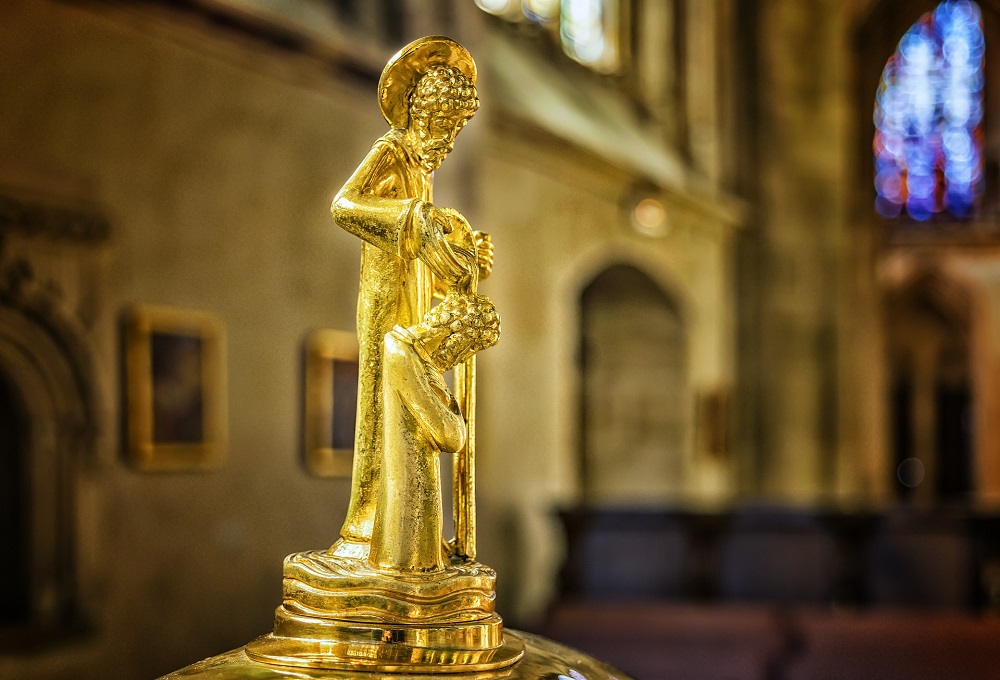

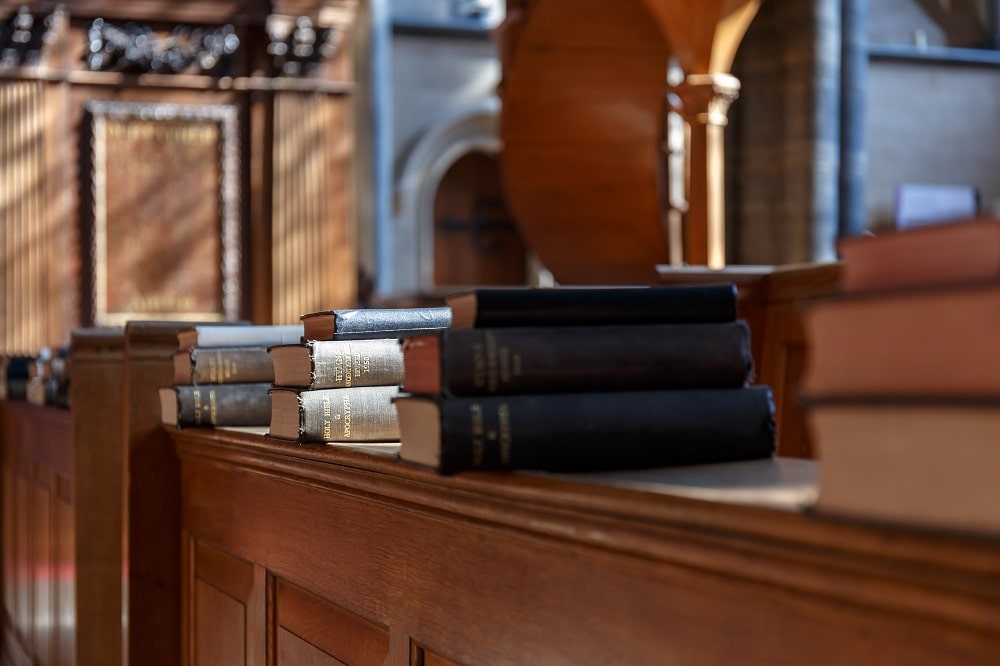

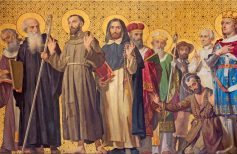

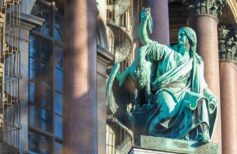
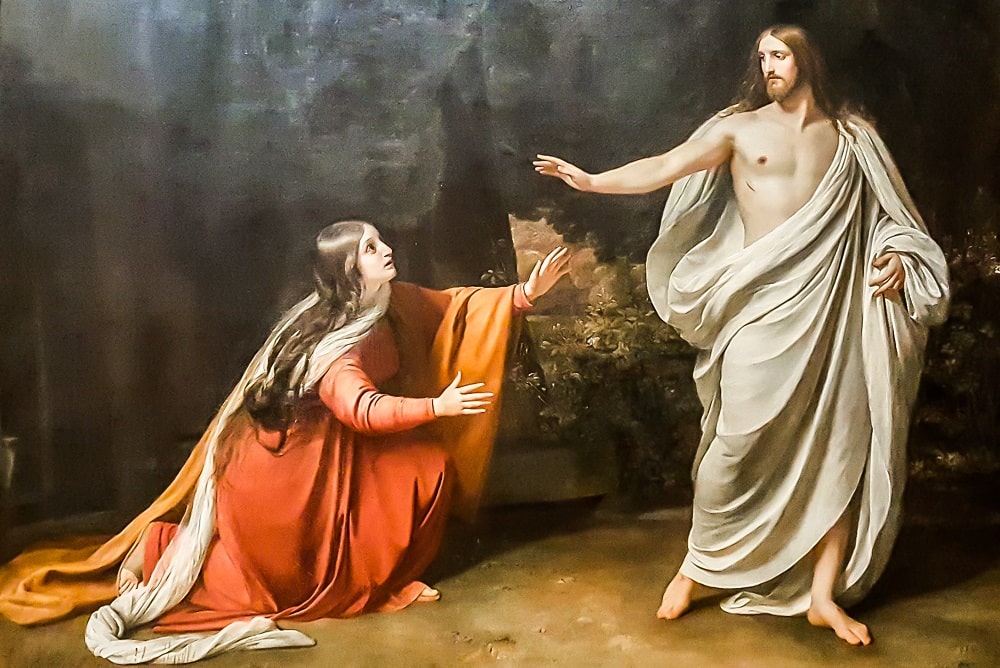
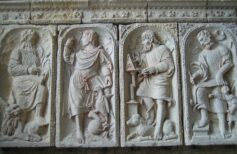









 19 March 2025
19 March 2025






